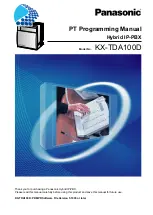
n
Startup when expected/actual configuration differs
–
If the checkbox for
‘Startup when expected/actual configuration differ’
is dese-
lected and at least one module is not located at its configured slot or if another
type of module is inserted there instead, then the CPU does not switch to RUN
mode and remains in STOP mode.
–
If the checkbox for
‘Startup when expected/actual configuration differ’
is selected,
then the CPU starts even if there are modules not located in their configured slots
of if another type of module is inserted there instead, such as during an initial
system start-up.
n
Monitoring time for ready message by modules [100ms]
–
This operation specifies the maximum time for the ready message of every con-
figured module after PowerON.
–
Here connected PROFIBUS DP slaves are also considered until they are parame-
terized.
–
If the modules do not send a ready message to the CPU by the time the moni-
toring time has expired, the actual configuration becomes unequal to the preset
configuration.
n
Monitoring time for transfer of parameters to modules [100ms]
–
The maximum time for the transfer of parameters to parameterizable modules.
–
Here connected PROFINET IO devices also considered until they are parameter-
ized.
–
If not every module has been assigned parameters by the time this monitoring
time has expired; the actual configuration becomes unequal to the preset configu-
ration.
n
Update OB 1 process image cyclically
–
This parameter is not relevant.
n
Scan cycle monitoring time
–
Here the scan cycle monitoring time in milliseconds may be set.
–
If the scan cycle time exceeds the scan cycle monitoring time, the CPU enters the
STOP mode.
–
Possible reasons for exceeding the time are:
- Communication processes
- a series of interrupt events
- an error in the CPU program
n
Minimum scan cycle time
–
This parameter is not relevant.
n
Scan cycle load from Communication
–
Using this parameter you can control the duration of communication processes,
which always extend the scan cycle time so it does not exceed a specified length.
–
If the cycle load from communication is set to 50%, the scan cycle time of OB 1
can be doubled. At the same time, the scan cycle time of OB 1 is still being influ-
enced by asynchronous events (e.g. hardware interrupts) as well.
n
Size of the process image input/output area
–
Here the size of the process image max. 2048 for the input/output periphery may
be fixed (default: 128).
n
OB85 call up at I/O access error
–
The preset reaction of the CPU may be changed to an I/O access error that
occurs during the update of the process image by the system.
–
The Yaskawa CPU is preset such that OB 85 is not called if an I/O access error
occurs and no entry is made in the diagnostic buffer either.
n
Clock memory
–
Activate the check box if you want to use clock memory and enter the number of
the memory byte.
Startup
Cycle / Clock memory
System 300S
+
Deployment CPU 315-4PN23
Setting standard CPU parameters > Parameters CPU
HB140 | CPU | 315-4PN23 | en | 18-02
45
Содержание SPEED7 300S+ CPU 315PN
Страница 1: ...CPU 315 4PN23 Manual HB140 CPU 315 4PN23 en 18 02 System 300S SPEED7 CPU 315PN...
Страница 89: ...System 300S Deployment PtP communication Modbus Example communication HB140 CPU 315 4PN23 en 18 02 89...
Страница 155: ...Appendix System 300S Appendix HB140 CPU 315 4PN23 en 18 02 155...
















































